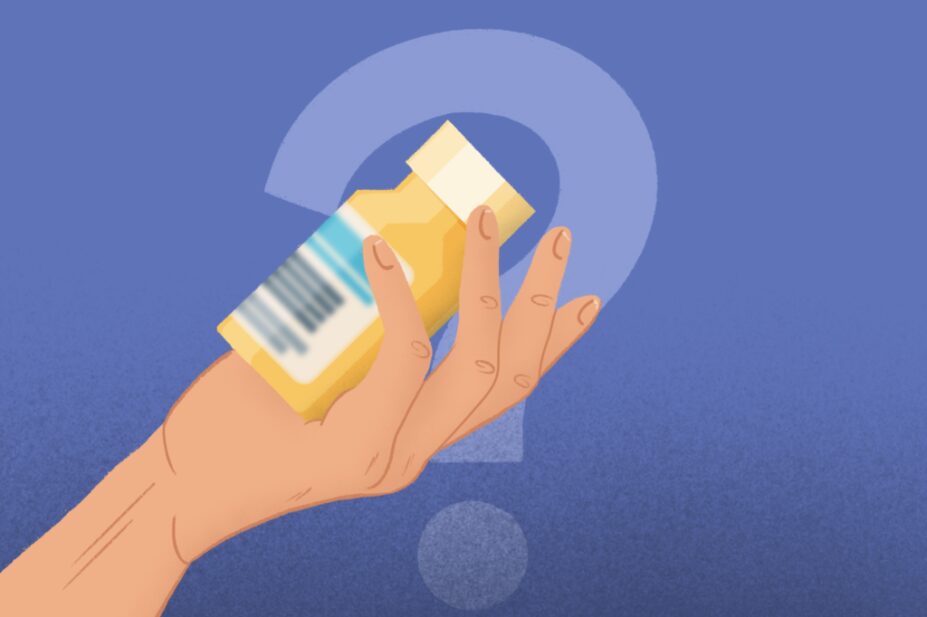
Shutterstock.com/The Pharmaceutical Journal
People with learning disabilities experience remarkably high rates of morbidity and mortality compared with the wider population.
As part of the ‘Learning Disabilities Mortality Review’, published in 2019, data revealed that a woman with learning disabilities will, on average, die 27 years earlier than a woman without learning disabilities. For men, the difference is 23 years. This means that, while 85% of the UK population died over the age of 65 years in 2018, this proportion was just 37% for those with learning disabilities[1].
Many of these premature deaths could have been prevented with good quality care, with the review having found that people with learning disabilities died from an avoidable medical cause of death twice as frequently as those without learning disabilities.
Throughout their lives, people with learning disabilities also experience a wider range of ongoing health conditions, such as epilepsy, dementia and heart failure, when compared with the general population[2].
In part, this is owing to the fact that people with learning disabilities — defined as those who have a significantly reduced ability to understand new or complex information and to learn new skills — are prescribed more medication than average.
One study from researchers at the University of Hertfordshire reported that people with learning disabilities received 5.4 repeat prescriptions per year compared to 1.6 repeat prescriptions for people without learning disabilities[2]. Yet medicine information and labelling does not meet their needs.
Issues with eyesight
Data included in a Public Health England report — ‘Eye care and people with learning disabilities: making reasonable adjustments’ — show that this group experiences a higher rate of eye conditions, such as squint/eye turn and damage to the optic nerve, then the wider population and an estimated 60% of people with learning disabilities require glasses[3].
There is a ten-fold increase in serious sight problems for people with learning disabilities compared with the adult population overall
The report, published in January 2020, states that there is a ten-fold increase in serious sight problems for this population group compared with the adult population overall[3].
However, current medicine-labelling practices are not as accessible as they should be for people with learning disabilities and are aimed at those with good eyesight and literacy skills.
For example, a systematic review of care offered to people with learning disabilities, the findings of which were published in 2022, revealed “a series of safety inequalities” and pointed to the need for urgent attention to these systemic gaps at a policy level[4]. The authors identified “healthcare rigidity, lack of individualised care and ineffective written and verbal exchanges as issues that can endanger patient safety and increase inequalities”.
For this reason, the Care Quality Commission included people with learning disabilities in their quality objectives for 2021–2025 as a key group of people who experience barriers to accessing services or receiving accessible information appropriate for their needs[5]. The objectives are aimed to tackle the inequality and “make sure everyone has good quality care”.
Finding a solution
We endeavoured to take the lead on offering more accessible labelling in our own trust. A project, led by our team at Leeds and York Partnership NHS Foundation Trust in 2021, was initiated in a focus group exploring the impact of COVID-19, when a person with learning disabilities requested medicine labelling with “the name of the tablets in big letters so I know what tablets I’m taking”.
In 2021 — the project’s first year — we ran exploratory workshops, listening to how people with learning disabilities engaged with information on medicines at home, at the doctors and at the pharmacy (see Box). We used visual minuting to capture views and we produced a poster to show participants’ responses and the co-design approach we used for the work.
We collaborated closely with our pharmacy service, which provided vital support, shared contacts and gave ongoing advice and guidance. We also shared initial project plans with local groups for people with learning disabilities, a GP adviser and representative from community pharmacies.
Box: Main workshop findings
- Understanding medication really matters to people;
- Not being able to read medication labels is a risk to patient safety, frustrating and takes away people’s independence;
- Changing the colour of packaging or the tablets themselves can be problematic, especially if these changes are not explained.
In the project’s second year, we conducted user testing to hear the views of eight people with learning disabilities on two types of medication labels produced by the hospital: standard size and a large-print version.
Five of the eight people we spoke to said they preferred a larger label, with one person noting that the safety information “keep out of sight and reach of children” was small and difficult to see. Off the back of this, the team produced a short film to communicate some of the difficulties people with learning disabilities have in understanding medication labels and what they would prefer.
Having asked a wide range of service users, family and friends, the project steering group found that there was little public awareness that large-font labels could be produced by pharmacies. If the public is not aware, they will not be able to ask for this adjustment when it is required.
Currently the project team is planning to design posters for our hospital settings, aimed at raising awareness for service users and staff of how pharmacy services can support people taking medication through a range of interventions, such as larger labels, easy-open containers and reminder aids.
Personalised labelling
Overall, our project highlighted that it is time to move away from the standard labels and look towards more personalised medicine labels, actively promoting ways to support people with learning disabilities in taking their medicines. For community pharmacies, this may mean flagging patients on the pharmacy IT system who wish to have adjustments, such as larger-print labels or easy-read information[6].
Pharmacy staff may need further training so that they are alert to the diverse needs of people with learning disabilities
This shift could include allocating more time to talk, to ensure that people with learning disabilities get the reasonable adjustment they need to access pharmacy services. A West Yorkshire Community Pharmacy project, ’Making Time’, highlighted in 2016 that building relationships, being approachable and flexible, and asking questions are crucial to providing the personalised service required[7,8].
In a hospital setting, before discharge, pharmacists are well placed to address additional issues a person with learning disabilities may have, such as poor swallow/dysphagia and requiring liquid medicine or certain sized tablets, or supporting people with easy-open containers owing to physical issues, such as problems with muscle control, strength or dexterity.
Our study also recorded that any changes in medication — such as the colour of the packaging, brand, formulation switches or the number of tablets — often caused great concern that the incorrect medication had been supplied.
These anxieties could easily lead to poor adherence levels and decreased medicine optimisation, and could be potentially dangerous. Any medication change also gives a great opportunity for personalised care, to answer patient-led queries and reassure people that they do have the right medication.
To meet these needs, pharmacy staff may need further training so that they are alert to the diverse needs of people with learning disabilities and prepared to effectively support this group of people. In September 2023, the Royal Pharmaceutical Society called for training on learning disabilities and autism to be mandatory for all pharmacists “as they are often the first point of contact for these patients and manage their medications every day”[9].
It is hoped that less rigidity and more attention to meeting individual’s needs could play a part in reducing risks to patient safety and improve health outcomes for people with learning disabilities.
- 1Heslop P. The Learning Disabilities Mortality Review Programme Annual Report 2019 . University of Bristol . 2020. https://www.bristol.ac.uk/media-library/sites/sps/leder/LeDeR_2019_annual_report_FINAL2.pdf (accessed October 2023)
- 2Smith MVA, Adams D, Carr C, et al. Do people with intellectual disabilities understand their prescription medication? A scoping review. Research Intellect Disabil. 2019;32:1375–88. https://doi.org/10.1111/jar.12643
- 3Eye care and people with learning disabilities: making reasonable adjustments. UK government. 2020. https://www.gov.uk/government/publications/eye-care-and-people-with-learning-disabilities/eye-care-and-people-with-learning-disabilities-making-reasonable-adjustments (accessed October 2023)
- 4Ramsey L, Albutt A, Perfetto K, et al. Systemic safety inequities for people with learning disabilities: a qualitative integrative analysis of the experiences of English health and social care for people with learning disabilities, their families and carers. Int J Equity Health. 2022;21. https://doi.org/10.1186/s12939-021-01612-1
- 5Our equality objectives 2021-2025. Care Quality Commission. 2022. https://www.cqc.org.uk/about-us/our-strategy-plans/our-equality-objectives-2021-2025 (accessed October 2023)
- 6Reasonable Adjustment Flag (RAF) information (IT). Community Pharmacy England. 2020. https://cpe.org.uk/digital-and-technology/electronic-health-records/reasonable-adjustment-flag-raf-info-it/ (accessed October 2023)
- 7Making Time Project Guide. Community Pharmacy West Yorkshire . 2015. https://www.cpwy.org/wp-content/uploads/sites/128/2022/04/Making-Time-Service-Guide.pdf (accessed October 2023)
- 8Urban R. Making Time Interim Report. Community Pharmacy West Yorkshire. 2016. https://cpe.org.uk/wp-content/uploads/2017/03/CPWY-Making-Time-interim-report.pdf (accessed October 2023)
- 9RPS supports mandatory training on learning disability and autism for pharmacists. Royal Pharmaceutical Society. 2023. https://www.rpharms.com/about-us/news/details/rps-supports-mandatory-training-on-learning-disability-and-autism-for-pharmacists (accessed October 2023)


